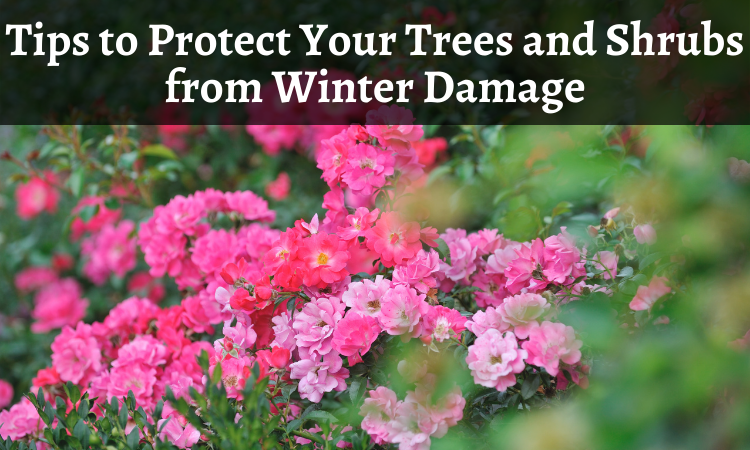Tips to Protect Your Trees and Shrubs from Winter Damage

Has extreme winter weather taken a toll on your landscape? Don’t worry because we are here to cover you! Though some plants like thuja emerald plantations adapt well in the winter temperatures, some fail to survive. But you can take some steps to prepare your plants for challenging extreme cold weather.
Here are some effective tips to protect your landscape during the coldest time of the year.
Water Your Plants Properly
Proper care of your plants is the key to keeping them alive throughout all seasons, including winter. Healthy plants survive the winter in a much better way. And to keep your plants healthy, water is essential. So, provide an adequate amount of water to your plants to keep them hydrated and prepare them to endure extreme conditions. Proper watering is necessary for the optimum growth of your plants.
During winters, the air temperature falls, which ceases the shoot growth. Also, roots develop until the soil drops below 40℉. Consistent and thorough watering boosts the maximum root development, which is the foundation of a healthy plant. It applies sufficient water to moisten the soil up to 8 to 10 inches below the surface once a week until freezing temperature ensues.
Use Anti-Desiccants
Gardeners often ask whether they should use anti-desiccant sprays or not. Experts say that using this pesticide can be useful when applied correctly. However, it can also be damaging if used inappropriately. Many gardeners use anti-desiccants to protect their evergreens like thuja emerald plantations from winter desiccation. But if you want the best results, ensure to read and follow all the given instructions on the product label. Most anti-desiccants work the best when temperatures are near 40 to 50 degrees.
Remember to spray all parts of the plant properly, as plants tend to lose water through both the lower and upper surfaces of their leaves. Also, avoid applying the anti-desiccants too early as they may have damaging effects. Try to apply it when your evergreens are fully dormant in the late fall. When applied correctly and carefully, it can help retain the moisture in leaves and also protect against the loss of moisture during the winter season.
Wrap with Burlap
Several broadleaf evergreens are susceptible to drying out during winters. Leaves and needles lose water in a process known as transpiration, even in cold weather. Water loss is at its peak at the time of strong winds and also mild sunny weather. In extremely cold weather, the ground freezes and cuts off the water supply to the roots of plants. As a consequence, when water is transpired faster than it is drawn up, the leaves start to turn brown and desiccate. You can protect your trees or newly young shrubs with burlap.
So, surround your young planted shrubs with burlap to avoid freezing or browning. Your new shrubs need protection like burlap to survive the extreme winter conditions. Besides, building windbreaks can also prevent winter injuries like desiccation. Moreover, you can also protect your plants from animals like deer by wrapping them with burlap.
Adopt Mulching
Surprisingly, snowy winters can be best for shrub or tree survival. Newly planted young shrubs need extra protection at the soil level, and mulching can work in their favor. Snow naturally insulates the root zone of plants and moderates soil temperature. Snow covers insulate the soil and prevent it from extremely low temperatures. Mulching limits thawing and freezing by insulating the soil. That’s the reason why woody plants are more likely to suffer damage due to cold when there is little snow to provide protection to their root systems.
So, create a blanket of protection by spreading a 4-inch layer of mulch to cover your shrubs. But remember to leave enough space between the mulch and the trunk to give room for breathing. Also, make sure to remove the mulch when you notice the signs of growth in spring.
Select Suitable Plants
Even after doing everything that you can, your plant might suffer winter damage. However, there are some plants that adapt to the winter season better than others. You can completely avoid the winter injury of plants by selecting the appropriate ones. Choose trees or shrubs that are hardy enough to survive winter temperature without extra care. Some low-maintenance plants that you can pick for the winter include snake plant, cactus, Phalaenopsis, spider plant, thuja varieties like thuja Brabant 140 160 cm, and more.
Applying the above-mentioned care tips to these winter-tolerant plants is enough to keep them alive and healthy even during winters. Apart from this, ensure to plant your trees or shrubs in the proper place in the landscape. For example, if you have broadleaf evergreen, try to plant it on the north or eastern sides of the building.
Conclusion
Hopefully, these tips will help you provide better protection and care to your plants during extremely cold weather. The freezing temperature, cold winds, and snow can damage foliage or even kill roots and branches. But with the tips mentioned above, you can protect your plants effectively. So, follow these tips and maintain your plant’s health throughout the year.




